
William Fitch Allen (July 28, 1808 – June 3, 1878) was an American lawyer and politician.

William Fitch Allen (July 28, 1808 – June 3, 1878) was an American lawyer and politician.
He was born on July 28, 1808, in Windham County, Connecticut, the eldest son of Abner Harvey Allen and Cynthia Palmer, a sister of the mother of Sanford E. Church. He graduated from Union College in 1826. Then he studied law in the office of John C. Wright at Esperance, New York, and in the office of C. M. and E. S. Lee at Rochester, New York. He was admitted to the bar in 1829, and commenced practice in partnership with George Fisher at Oswego until 1833. In 1834, he formed a partnership with Abraham P. Grant which continued until his election to the New York Supreme Court. He was Supervisor of the Town of Oswego in 1836 and 1837. [1]
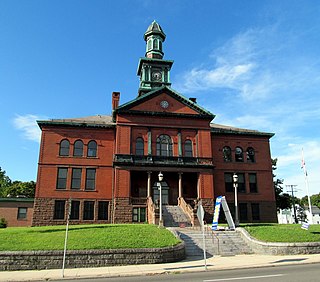
Windham County is a county located in the northeastern corner of the U.S. state of Connecticut. As of the 2010 census, the population was 118,428, making it the least populous county in Connecticut. It forms the core of the region known as the Quiet Corner.
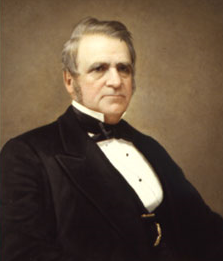
Sanford Elias Church was an American lawyer and Democratic politician. He served as Lieutenant Governor of the state of New York and chief judge of the New York Court of Appeals for a decade.

Union College is a private, non-denominational liberal arts college located in Schenectady, New York. Founded in 1795, it was the first institution of higher learning chartered by the New York State Board of Regents. In the 19th century, it became the "Mother of Fraternities", as three of the earliest such organizations were established there. After 175 years as a traditional all-male institution, Union College began enrolling women in 1970.
Allen was a Democratic member of the New York State Assembly in 1843 and 1844. [2] From 1845 to 1847, he was United States Attorney for the Northern District of New York. He was a Justice of the New York Supreme Court from 1847 to 1863, and sat ex officio on the Court of Appeals in 1854 and 1862. In 1863, he removed to New York City and resumed the practice of law there.

The New York State Assembly is the lower house of the New York State Legislature, the New York State Senate being the upper house. There are 150 seats in the Assembly, with each of the 150 Assembly districts having an average population of 128,652. Assembly members serve two-year terms without term limits.

The 66th New York State Legislature, consisting of the New York State Senate and the New York State Assembly, met from January 3 to April 18, 1843, during the first year of William C. Bouck's governorship, in Albany.

The 67th New York State Legislature, consisting of the New York State Senate and the New York State Assembly, met from January 2 to May 7, 1844, during the second year of William C. Bouck's governorship, in Albany.
He was New York State Comptroller from 1868 to 1870, elected at the New York state election, 1867; and re-elected at the New York state election, 1869. He resigned this office in June 1870.

The New York State Comptroller is a state cabinet officer of the U.S. state of New York and head of the New York state government's Department of Audit and Control. The duties of the comptroller include auditing government operations and operating the state's retirement system, the New York State Common Retirement Fund.
At the New York special judicial election, 1870, he was elected to the New York Court of Appeals, and in July 1870 became one of the first judges of the new court upon its re-organization after the amendment of the State Constitution in 1869. He remained on the bench until his death on June 3, 1878, in Oswego, New York. [3]

The New York Court of Appeals is the highest court in the U.S. state of New York. The Court of Appeals consists of seven judges: the Chief Judge and six Associate Judges who are appointed by the Governor and confirmed by the State Senate to 14-year terms. The Chief Judge of the Court of Appeals also heads administration of the state's court system, and thus is also known as the Chief Judge of the State of New York.

Oswego is a city in Oswego County, New York, United States. The population was 18,142 at the 2010 census. Oswego is located on Lake Ontario in north-central New York and promotes itself as "The Port City of Central New York". It is the county seat of Oswego County.
| Political offices | ||
|---|---|---|
| Preceded by Thomas Hillhouse | New York State Comptroller 1868–1870 | Succeeded by Asher P. Nichols |

Lorenzo Sawyer was an American lawyer and judge who was appointed to the Supreme Court of California in 1860 and served as the ninth Chief Justice of California from 1868 to 1870. He served as a United States Circuit Judge of the United States Circuit Courts for the Ninth Circuit and of the United States Court of Appeals for the Ninth Circuit. He is best known for handing down the verdict in the case of Woodruff v. North Bloomfield Gravel Mining Company; his verdict is frequently refereed to as the Sawyer Decision.

Greene Carrier Bronson was an American lawyer and politician from New York.
Joseph Christian was born in Middlesex County, Virginia. He was educated at Columbian College in Washington, D. C. and studied law at Staunton, Virginia. Admitted to the bar at the age of 21, he started practicing law in Middlesex and adjoining counties. In 1858, he was elected to the Virginia State Senate and served as a Senator during the American Civil War. He was elected circuit judge in 1866, for the circuit composed of the counties of Middlesex, Gloucester, Matthews, James City, Warwick, New Kent, Charles City and Henrico. He moved to Richmond in 1869 and formed a law partnership with William T. Joynes. This partnership lasted until January 1, 1870 when both partners were elected to the Supreme Court of Appeals. Judge Christian served on the bench for twelve years. Being defeated for re-election in 1882, he returned to private practice. He died in Richmond.
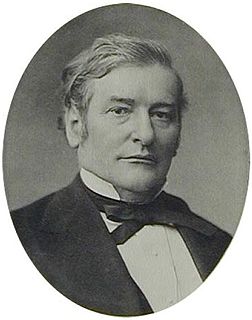
Noah Davis was an American lawyer and politician from New York.

John Fitch Kinney was a prominent American attorney, judge, and Democratic politician. He served as Justice of the Supreme Court of Iowa, twice as Chief Justice of the Supreme Court of the Territory of Utah and one term as the Territory of Utah's Delegate in the House of Representatives of the 38th Congress.
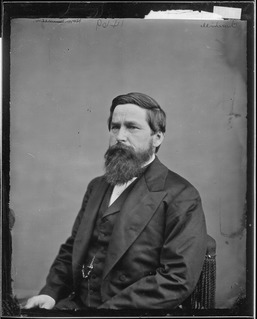
John Charles Churchill was an American lawyer and politician from New York.

Charles Daniels (March 24, 1825 in New York City – December 20, 1897 in Buffalo, Erie County, New York, United States was an American lawyer and politician.
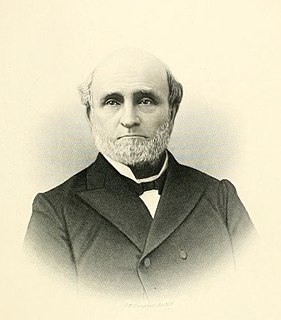
Robert Earl was an American lawyer and politician from New York. He was Chief Judge of the New York Court of Appeals in 1870 and 1892.

Alexander Smith Johnson was a Judge and Chief Judge of the New York Court of Appeals and was a United States Circuit Judge of the United States Circuit Courts for the Second Circuit.
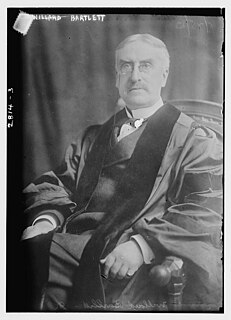
Willard Bartlett was an American jurist. He was Chief Judge of the New York Court of Appeals.

William Marvin was an American lawyer, politician, and United States federal judge. He was the seventh Governor of Florida.

A special judicial election was held on May 17, 1870, to fill the seats on the re-organized New York Court of Appeals.

At a special judicial election on June 7, 1847, four judges of the New York Court of Appeals, the Clerk of the Court of Appeals, 32 justices of the new New York Supreme Court district benches, county judges, surrogates, districty attorneys and all other judicial officers in the state of New York were elected, to take office on July 5, 1847.

Charles Mason was an American lawyer and politician from New York.

The 1878 New York state election was held on November 5, 1878, to elect a judge of the New York Court of Appeals, as well as all members of the New York State Assembly and one member of the New York State Senate to sit in the 102nd New York State Legislature.
John Abraham Lott was an American lawyer and politician from New York.
Samuel Bostwick Garvin was an American lawyer and politician from New York.

George Gardner Barnard was an American lawyer and politician from New York. He was one of only four people ever tried by the New York Court for the Trial of Impeachments.

Milton Hills Myrick was an Associate Justice of the Supreme Court of California from January 5, 1880 to January 3, 1887.